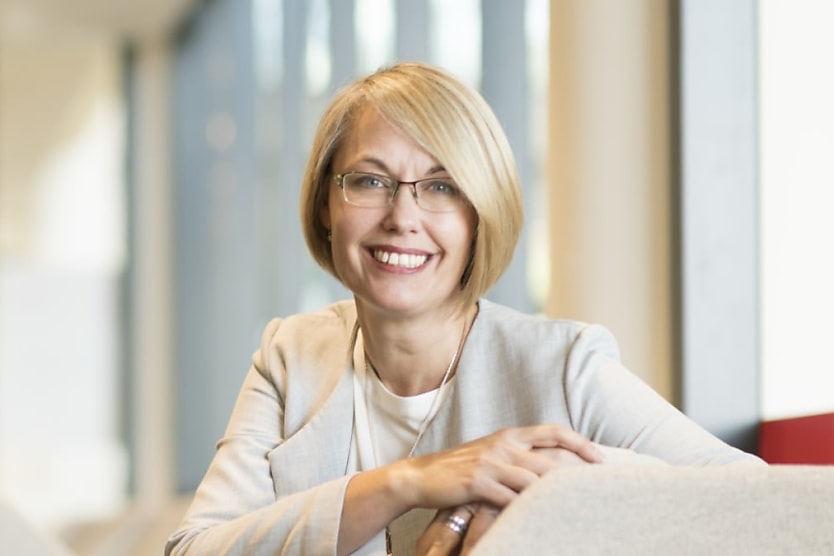
Rapid changes and disruption to the role of employers and workplaces in recent years has thrust employee wellbeing firmly into the spotlight. Where wellbeing was once considered a ‘nice to have’, it’s now seen as a strategic imperative for all organisations to have a considered approach to nurturing the whole employee – and rightly so.
For many, the term ‘wellbeing’ brings to mind lunchtime yoga classes and healthier snack options; and whilst these undeniably have their benefits, wellbeing goes far beyond this. Taking steps to embed an employee-centric approach has significant flow-on effects for your organisation and can go a long way in tackling issues like the risk of burnout and poor employee engagement.
There are tried and tested ways to put wellbeing into practice. At Workday, we use many of these initiatives with our global workforce, and they have been central to the development and growth of our business both globally and regionally in Australia and New Zealand.
Start by listening to employees
Too often, wellbeing programs can focus on what leaders think their teams want instead of what they actually need. Each workforce is unique, so there’s no one-size-fits-all solution. Creating an open and transparent dialogue uncovers what is really needed. Fostering a culture that improves wellbeing means actively listening to what employees say.
Technology hands us the tools to do this. Intelligent engagement tools can allow for continuous listening and real-time employee engagement. But the most powerful part is what happens next: taking steps to continuously improve culture and conditions and working through feedback and change.
This isn’t always an easy fix, which means also taking on board when employees may be under resourced or cultural issues arise. However, listening to feedback and implementing the measures to address it is where you can actually increase employee engagement, productivity, and inclusivity.
Build a well-rounded approach to wellbeing
People are central to most businesses, and they also have complex, diverse lives, meaning caring for their wellbeing requires a multi-faceted approach.
We base this on four pillars: happiness, health, movement, and nutrition, going beyond the traditional scope of employee medical or fitness support.
We also understand how family-wide wellness contributes to that of an individual and have expanded our benefits to include them, recognising the diverse ways a family may need support; and the diverse make up of families, like same-sex couples, multi-generational households, and even pets.
This includes holistic family health, such as offering family-wide private healthcare cover, an EAP program, access to Maven (a family planning and support service), extended caregiving leave, and flexible work policies. In Australia, this approach has also seen us recently certified as a Family Inclusive WorkplaceTM by Parents At Work and UNICEF Australia.
Our policies and initiatives also allow employees to focus on the aspects of wellbeing most important to them, with opportunities to incorporate personal interests or activities into the working day.
Flexibility where it matters most
Workplace flexibility can also bring immeasurable benefits, such as the freedom to dictate your own schedule and prioritise a healthy work/life balance. Post-pandemic lockdowns, many workplaces have shifted to a hybrid approach, but to get the best outcome, this must be shaped by an employee-led dialogue. When done right, it gives the best of both worlds: workplace connectedness and community as well as autonomy.
Having the right tools is essential to supporting flexible working patterns.
Hybrid working, and increased flexibility for roles not suited to home working like some healthcare positions, can be enabled by technology. Our goal is to allow people to communicate, access information, and complete tasks in our system from any digital workspace in their natural workflow.
In summary, wellbeing at work needs a considered and holistic approach. But most importantly, it should be employee-centric and keep humanness at heart. A focus on caring for employees as people can transform your culture and organisation, setting you clearly apart from the competition.
Jo-Anne Ruhl is the vice president and managing director for Workday Australia and New Zealand
Shandel McAuliffe
Shandel has recently returned to Australia after working in the UK for eight years. Shandel's experience in the UK included over three years at the CIPD in their marketing, marcomms and events teams, followed by two plus years with The Adecco Group UK&I in marketing, PR, internal comms and project management. Cementing Shandel's experience in the HR industry, she was the head of content for Cezanne HR, a full-lifecycle HR software solution, for the two years prior to her return to Australia.
Shandel has previous experience as a copy writer, proofreader and copy editor, and a keen interest in HR, leadership and psychology. She's excited to be at the helm of HR Leader as its editor, bringing new and innovative ideas to the publication's audience, drawing on her time overseas and learning from experts closer to home in Australia.










